North America Location Analytics Market Size
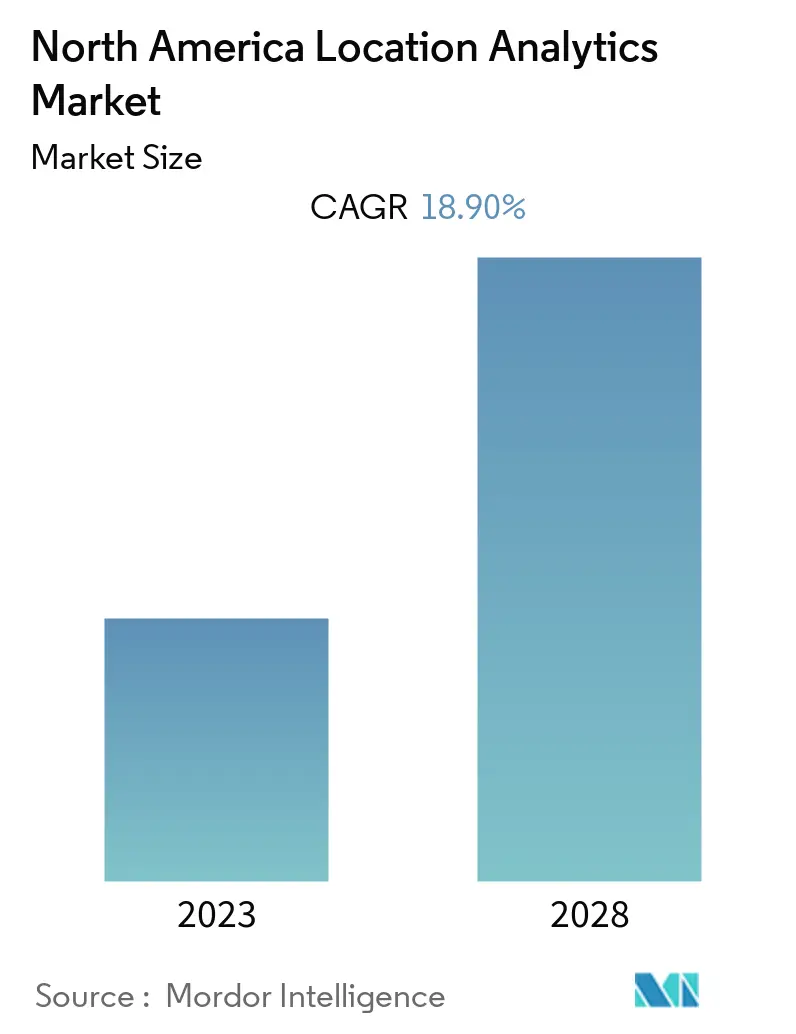
| Study Period | 2018 - 2028 |
| Base Year For Estimation | 2021 |
| Forecast Data Period | 2024 - 2028 |
| Historical Data Period | 2018 - 2020 |
| CAGR | 18.90 % |
| Market Concentration | Medium |
Major Players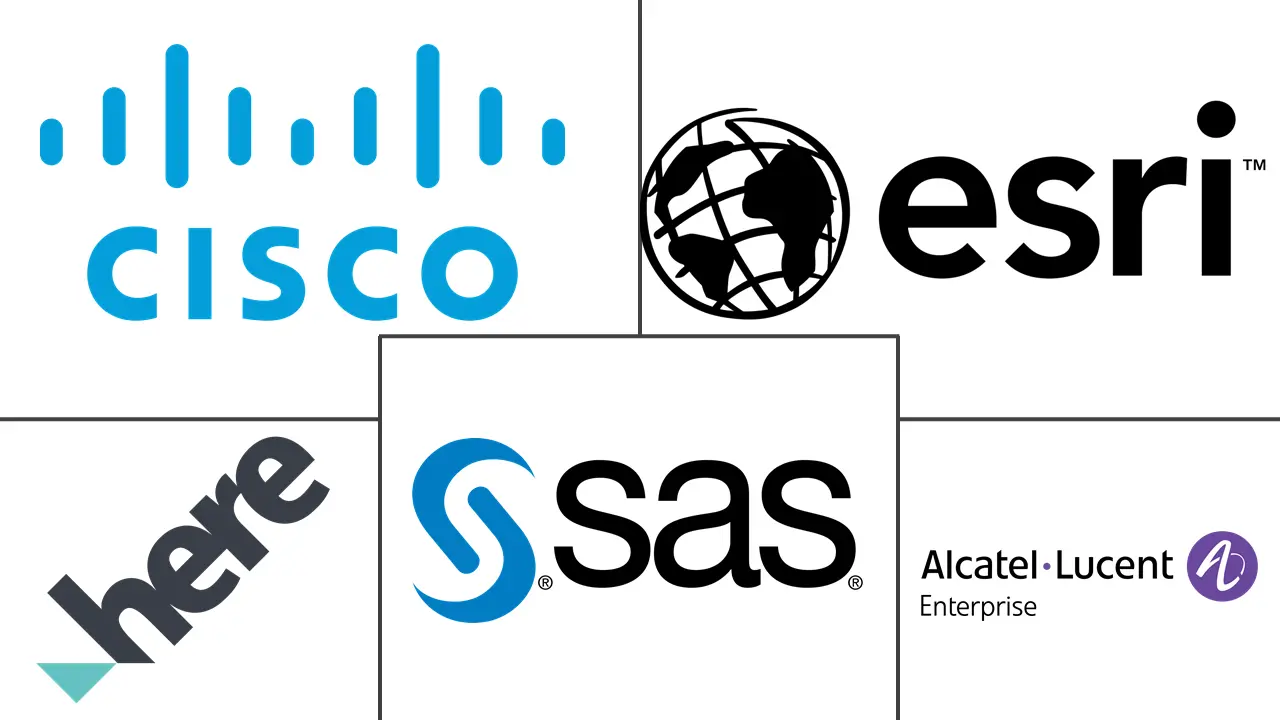
*Disclaimer: Major Players sorted in no particular order |
Need a report that reflects how COVID-19 has impacted this market and its growth?
North America Location Analytics Market Analysis
The North America Location Analytics market is expected to register a CAGR of 18.9% during the forecast period (2021 - 2026). In recent years, geospatial services have grown in popularity in various industries, including retail, government, healthcare, and industrial. Cloud computing, the Internet of Things (IoT), blockchain, and artificial intelligence are expanding the applications of location analytics and, as a result, driving the market.
- The market is being significantly driven by the GPS (Global Positioning System) practices into smartphones, vehicles, and other portable devices. The most rapidly evolving positioning methods combine mobile positioning with satellite-based GPS. The practical precision of more widely used methods, such as global cell identity (CGICTA) and enhanced observed time difference (E-OTD), is in the range of 50–1000 m. These technologies provide end-users with opportunities based on the accuracy required for specific application location identification.
- The United States boasts various GPS infrastructures, such as satellites, equipment manufacturers, and supportive research funding, combined with government support to boost the technology's penetration and accuracy influences market growth. In lieu of this situation US Federal Communications Commission (FCC) waived off rules to allow devices in the country to access signals transmitted by Galileo Global Navigation System; this influenced the GNSS chip makers in the country to incorporate the capability, thus increasing the accuracy.
- Additionally, location analytics are increasingly being used in the healthcare sector for sales territory analytics for pharmaceuticals, Location, and alignment of retail health care service providers with patients and consumers, utilizing population demographics, lifestyle segmentation, and insurance availability, geospatial techniques like hot-spotting for mediating the issues of high re-admittance rates for hospitals, etc. Canada spends a significant amount of money on healthcare, and it commands a demand for various health tracking devices and applications, as well. For instance, according to CIHI, in 2020, the total health expenditure in Canada rose by 12.8% 2020 representing 13.7% of the GDP.
- Further, Mobile location analytics (MLA) technology is used to track smartphones and other internet-connected devices when they leave a store. This solution enables retailers to collect data for optimizing floor plan layouts, advertisement placement, checkout lane staffing, etc. Global demand for MLA technology is being driven by factors such as the growing need for improved transportation/logistics planning, risk analysis, and fraud detection. The increasing penetration of smartphones in North America is aiding the growth of the studied market. For instance, according to US Census Bureau and Consumer Technology Association, smartphone sales in the United States in 2020 and 2021 amounted to USD 79 billion and USD 73 billion, respectively.
- On the other hand, the frequency of data breaches has risen considerably in recent years due to various applications defying restrictions to gain access to a user's location without their authorization. The increasing data security and privacy concerns restrain the growth of the location analytics market. However, Google is planning to execute a new policy, requiring all app developers to go through an approval process before their apps collect users' location information while running in the background. This new policy is applicable to all new apps from August 2020.
North America Location Analytics Market Trends
This section covers the major market trends shaping the North America Location Analytics market according to our research experts:
Retail Segment is Expected to Hold a Major Market Share
- Location data serves as a driving force in the creation of a more unified omnichannel retail experience. Because of how easily people rely on mobile shopping and mobile location, the application of location analytics for retail has been pushed by the rising use of mobile devices, making it easier for sellers to integrate location data with marketing campaigns to display shoppers with appropriate recommendations at the right time.
- In recent years, location analytics has been increasingly used in the retail sector for various purposes like improving Return on Investment (ROI), increasing sales, controlling costs, boosting customer satisfaction, and building customer loyalty.
- Location-based marketing is another opportunity for retailers to drive increased revenue by delivering targeted messages to selected consumers nearby. Targeted advertising can also be shifted to digital advertising platforms based on the presence of a broader audience in the same place at the same time. Location intelligence also offers retailers an opportunity to link their customer’s online experience with brick-and-mortar stores. By connecting website visits and browsing history to a person’s physical presence in the store, retailers can better understand buyer behavior and address their needs.
- Further, location analytics is also used for retail site selection by enabling retailers to work with dynamic map visualizations that reveal populations and demographic groupings. The retailers can explore potential new locations in the surrounding areas and observe traffic patterns. By visualizing the catchment area for a potential location, retailers can quickly zero in on high-quality sites.
- For instance, in July 2021, INRIX, Inc., a prominent player in mobility analytics, announced INRIX IQ Location Analytics, a powerful new cloud-based LBS application that provides retailers, investors, and other business professionals the insights to open new stores, increase revenue, and maximize return on investment.
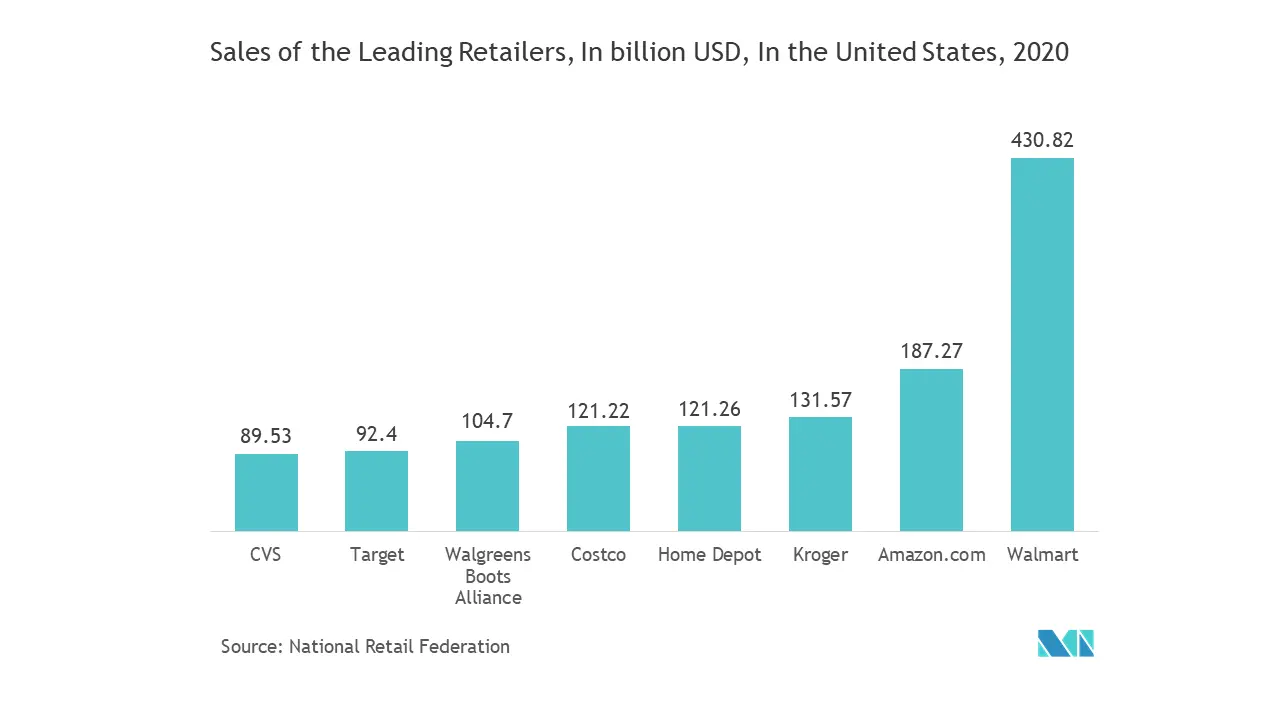
Growing Demand For Geo Based Marketing is Driving the Market
- Owing to the increasing usage of mobile devices, location has become one of the most crucial aspects of marketing. Marketing teams can easily target consumers by using location-based data on qualifiers such as upcoming events in their area, proximity to a store, and many more. Organizations can target consumers personally or geographically, with online or offline messaging based on their physical location using geo-based/location-based marketing. For instance, geo-based marketing may notify a prospect that a product they are considering is in stock in a nearby store, allowing them to purchase it right away.
- Moreover, the proliferation of connected devices has essentially enabled geo-based marketing in recent years. Everything nowadays appears to be connected to the internet - watches, automobiles, phones, and more. These connected devices frequently track their owners' movements; a wealth of location and geographical data is available. Marketing teams may use the information gleaned from this data to understand better how to approach consumers and improve their entire experience.
- It is critical to emphasize that the key to any geo-based marketing plan is to encourage customers to give their location data. For instance, consumers are eager to trade data in return for discounts, financial rewards, and other perceived benefits, according to a Microsoft research titled "The Consumer Data Value Exchange.
- When it comes to end-users, nearly half of U.S. retailers utilize location-based deals. It assists them in attracting customers to their retail establishments at the appropriate moment. It's challenging to stay in touch with consumers who are always on the move. Location-based marketing acts as a link between consumers and retailers. At the correct time, consumers may receive real-time push notifications, emails, and alerts. It's a great approach to reach out to people at a time when they're most likely to respond.
- For instance, Walgreens uses geofencing to promote customer loyalty by pushing a notification that allows users to open their app every time they enter the geofenced area. The user can further view promotional offers by looking at their account details. Moreover, While creating user journeys for a personalized experience, retailers notice several retargeting opportunities. When a user enters inside a retail store, offers and in-store validations can also be delivered. Real-time triggers might be used to target these remarketing opportunities.
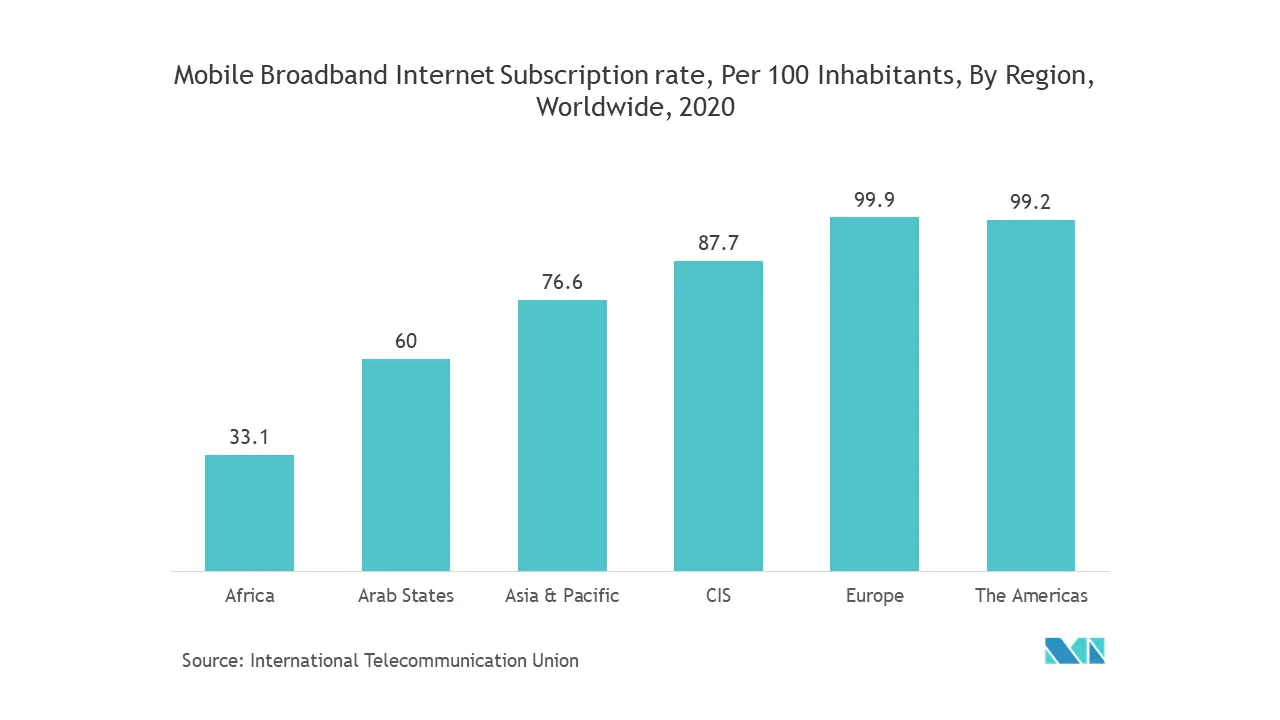
North America Location Analytics Industry Overview
The Location Analytics Market market is moderately fragmented, with significant vendors like Cisco Systems Inc., Esri Inc., IBM Corporation, etc., adopting strategies for mergers and acquisitions, strategic partnerships, among others, to expand their reach and stay competitive in the market. The market is competitive owing to multiple vendors providing analytics solutions to the domestic and international markets.
- October 2021- Kloudspot Inc. announced the partnership with Cisco Meraki to help organizations offer safer and smarter workspace experiences for customers and employees. The Kloudspot Platform and KloudVision combine real-time location intelligence and video analytics collected from the Cisco Meraki intuitive cloud-first platform to securely integrate unique safety features - such as occupancy monitoring for social distancing, automated triggers, and PPE compliance monitoring.
- February 2021- Ericsson and T-Systems partner to offer campus network solutions worldwide. The partnership delivers an integrated end-to-end location solution to directly meet the site connectivity needs of enterprise customers through high-quality, seamless service. The integrated campus solution delivers low latency, high volume on-site data processing, and high data security. These capabilities enable innovative business models and use cases, improved efficiency, and cost reductions for enterprises.
North America Location Analytics Market Leaders
Cisco Systems Inc.
Esri Inc.
SAS Institute, Inc.
HERE Global BV
ALE International (Nokia Corporation)
*Disclaimer: Major Players sorted in no particular order
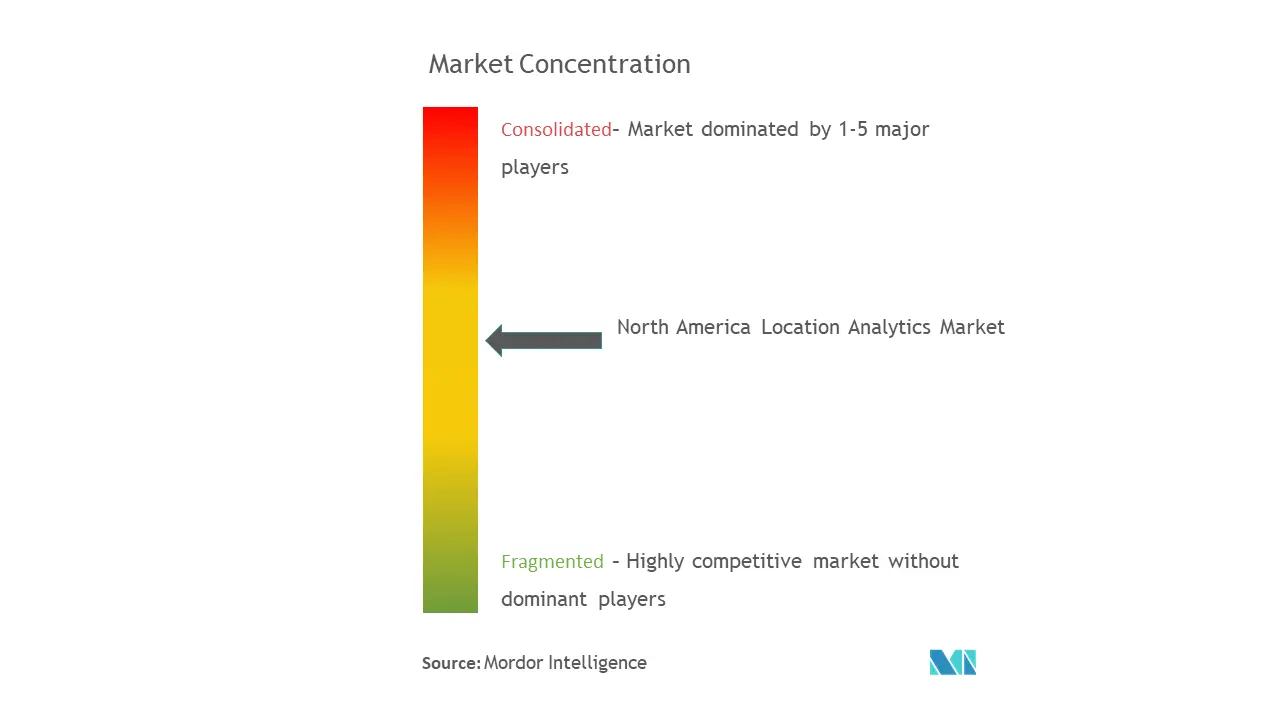
North America Location Analytics Market News
- October 2021 - HERE Global BV announced the launch of its new HERE Advanced Real-Time Traffic service. It introduces new lane-level information and expands inner-city coverage to help drivers reach their destinations more efficiently and stress-free.
- June 2020 - Microsoft partnered with SAS to further shape the future of analytics and AI. The two companies will enable customers to efficiently run their SAS workloads in the cloud, expanding their business solutions and unlocking critical value from their digital transformation initiatives. As part of the partnership, the companies will migrate SAS’ analytical products and industry solutions onto Microsoft Azure as the preferred cloud provider for the SAS Cloud.
North America Location Analytics Market Report - Table of Contents
1. INTRODUCTION
1.1 Study Assumptions and Market Definition
1.2 Scope of the Study
2. RESEARCH METHODOLOGY
3. EXECUTIVE SUMMARY
4. MARKET DYNAMICS
4.1 Market Overview
4.2 Industry Ecosystem Analysis
4.3 Market Drivers
4.3.1 Growing demand for geo-based marketing
4.3.2 Growth in Retail Market
4.3.3 Increasing Usage of Internet of Things
4.4 Market Challenges
4.4.1 Trade-offs between privacy/security and regulatory constraints
4.5 Key Standards and Regulations
4.6 Technology Snapshot
4.7 Assessment of the Impact of COVID-19
5. MARKET SEGMENTATION
5.1 By Location
5.1.1 Indoor
5.1.1.1 Outdoor
5.1.2 By Deployment Model
5.1.2.1 On-premise
5.1.2.2 Cloud
5.1.3 By End-User Vertical
5.1.3.1 Retail
5.1.3.2 Banking
5.1.3.3 Manufacturing
5.1.3.4 Healthcare
5.1.3.5 Government
5.1.3.6 Energy and Power
5.1.3.7 Other End-User Applications
5.1.4 By Application
5.1.4.1 Risk Management
5.1.4.2 Supply Chain Optimization
5.1.4.3 Sales and Marketing Optimization
5.1.4.4 Facility Management
5.1.4.5 Remote Monitoring
5.1.4.6 Emergency Response Management
5.1.4.7 Customer Experience Management
5.1.4.8 Others
5.1.5 By Country
5.1.5.1 United States
5.1.5.2 Canada
5.1.5.3 Rest of North America
6. COMPETITIVE LANDSCAPE
6.1 Company Profiles
6.1.1 Cisco Systems Inc.
6.1.2 SAP SE
6.1.3 Esri Inc.
6.1.4 Aruba Networks (HPE development LP)
6.1.5 IBM Corporation
6.1.6 SAS Institute, Inc.
6.1.7 Pitney Bowes Inc.
6.1.8 HERE Global BV
6.1.9 TIBCO Software Inc.
6.1.10 Ericsson Inc.
- *List Not Exhaustive
7. FUTURE OUTLOOK
8. INVESTMENT ANALYSIS
North America Location Analytics Industry Segmentation
The North America Location Analytics Market is Segmented by Location (Indoor, Outdoor), By Deployment Model (On-premise, Cloud), By Application (Risk Management, Supply Chain Optimization, Sales and Marketing Optimization, Facility Management, Remote Monitoring, Emergency Response Management, Customer Experience Management), By End-user Vertical (Retail, Banking, Manufacturing, Transportation, Healthcare, Government, Energy & Power).
Location analytics is the system of adding a layer of geographical data to a company's data assets to extract more valuable insights. It is also known as "geoanalytics." Understanding geospatial impacts on business are critical for success in today's global economy. Companies that use location analytics to evaluate their business strategies can save money, find new sales opportunities, and make changes to improve operational efficiency. Furthermore, location analytics is highly visual, making it easier for non-experts to understand data insights.
| By Location | ||||||||||
| ||||||||||
| ||||||||||
| ||||||||||
| ||||||||||
|
North America Location Analytics Market Research FAQs
What is the current North America Location Analytics Market size?
The North America Location Analytics Market is projected to register a CAGR of 18.9% during the forecast period (2023-2028).
Who are the key players in North America Location Analytics Market?
Cisco Systems Inc., Esri Inc., SAS Institute, Inc., HERE Global BV and ALE International (Nokia Corporation) are the major companies operating in the North America Location Analytics Market.
North America Location Analytics Industry Report
Statistics for the 2023 North America Location Analytics market share, size and revenue growth rate, created by Mordor Intelligence™ Industry Reports. North America Location Analytics analysis includes a market forecast outlook to 2028 and historical overview. Get a sample of this industry analysis as a free report PDF download.
